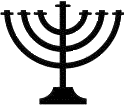The Jews In Sicily

The Jews In Sicily | 
|
Italia JudaicaIntroductionIn the publication of the papers of the fifth international meeting of Italia Judaica in Palermo on 15-19 June, 1992, Shlomo Simonsohn of Tel Aviv University, points out that this meeting of the group is dedicated to the history of the Jews in Sicily. That, in and of itself is a formidable task because of the lack of demographic data for much of the 1400 years among the fragments of data that document the Jewish presence. At this convention a number of papers were presented that attempted to come up with the numbers of people involved. Simonsohn himself is inclined to place the number of Jews at the time of the expulsion at a minimum of 20,000 and a maximum of 48,000. (Italia Judaica, 15) There were many and varied topics at the conference. Of the twenty three papers presented, two that especially interested me concerned themselves with the impact the Jewish presence had on the Sicilian language. A number of the papers reported on research that was centered around the records of Notaries that are found in the State Archives. Francesco Giunta and Laura Sciascia authored a paper on their research into the forced sale of properties brought on by the expulsion order and they asked the question; "Chi sono gli acquirenti?", that is, who are the purchasers? They found that the purchasers listed in the 349 records they uncovered included nobles, clerics, and artisans. (Italia Judaica, 172) Their paper contains transcriptions of all the records, in the original Latin, as well as an alphabetic list of the sellers followed by a listing of the buyers and then details of each transaction. Several papers deal with the Jews during the Arab occupation of Sicily and in the Ottoman empire. Others deal with topics such as Jewish settlements in particular cities of Sicily; The Jewish physician in Sicily; how the Jews were affected by the justice system; the character and location of many of the Jewish settlements; and the Jewish emigration to Rome, Calabria, and the Middle Eastern countries following the expulsion order. Many of the notes that follow are from one or other of those articles or from other sources. The parenthetical references will be found in the bibliography included at the end of this section. Notes
972 -- The oldest documentation of the existence of a Jewish quarter in Palermo is contained in a report by the merchant-traveller Ibn Hawqal who arrived in Palermo from Baghdad in 972 during the Arabic domination of Sicily. In his description of the city he makes reference to harat al yahud the gate through which you exited the Jewish quarter. (Fonti, 63).
1170 -- No demographic data for ancient and medieval Sicily has ever been ascertained. Benjamin of Tudela, who visited the island in 1170, reports having found 200 Jews in Messina and 1500 in Palermo, the numbers refer to men who were heads of households. (Italia Judaica, 19).
1266-1282 -- King Charles of Anjou encouraged merchants and bankers from abroad to come to Sicily as a way to raise revenue. He felt that they were more energetic than the Sicilians. "He did not, however, encourage Jews." (Runciman, 129)
1350-1450 -- "Sulla lingua o sul dialetto parlato dagli ebrei che vissero in Sicilia si sa molto poco. ... Ho quindi preferito presentare in questo congresso l'unico documento completo scritto in siciliano e composto da ebrei. ... trovare ... nel ... British Museum ... Questo componimento liturgico fu composto in aramaico all'inizio dell'era volgare e fu volto in siciliano da un autore anonimo tra la fine del XIV secolo o durante il XV secolo. Questa composizione liturgica, detta Alphabetin essendo i suoi versi ordinati secondo l'alfabeto ebraico, è un ampiamento narrative dei dieci comandament. ..." (Sermoneta, Italia Judaica, 341)
1492 -- "Dopo anni di preparativi si moltiplicano quest'anno nel mondo le manifestzioni colombiane per celebrare i V centenario della scoperta dell'America."
"Ma il 1492 è anche la data di un avvenimento storico che ha segnato in Europa l'inizio di una nuova ondata di persecuzioni contro il mondo ebraico, in seguito al provvedimento di espulsione emanato da Ferdinando e Isabella di Spangna." (Italia Judaica, 11)
After years of preparation, this year has seen the multiplication of many expressions in celebration of the fifth centenary of the discovery of America.
But 1492 is also the date of an historical event in Europe that signaled the beginning of a new wave of persecution against world Jewry following the edict of expulsion promulgated by Ferdinand and Isabella of Spain. (Italia Judaica, 11) Four hundred and fifty years later another catastrophe engulfed the Jews. This time modern technology was brought to bear. In 1492 it was the Spanish Kingdom, but after 1933 it was all of Europe. 1939-1945 -- It is estimated that the Holocaust in Nazi Europe methodically slaughtered 12 million people, including Gypsies, Poles, The handicapped, homosexuals, priests, ministers, nuns, and six million Jews. |
BibliographyFonti Per La Storia Dell'Espulsione Degli Ebrei Dalla Sicilia, ed by Romualdo Giuffrida, Aldo Sparsi, Salvo Di Matteo, Accademia Nazionale Di Scienze Lettere E Arti Di Palermo, Archivio Di Stato Di Palermo, 1992. Italia Judaica p.19, Benjamin of Tudela, Itinerary, ed. M.N.Adler, London 1907 (Hebrew part) p 70. Italia Judaica: Gli ebrei in Sicilia sino all'espulsione del 1492, Atti del V convegno internazionale Palermo, 15-19 giugno 1992. Pubblicazioni Degli Archivi Di Stato, Saggi 32, Ministero per Beni Culturali E Ambientali, Ufficio Centrale Per I Beni Archivistici, 1995 Italia Judaica p.341, Giuseppe Sermoneta, La traduzione siciliana dell'Alfabetin di Pentecoste e la prova dell'esistenza di un dialetto siciliano. Runciman, Steven, The Sicilian Vespers: A history of the Mediterranean World in the Later Thirteenth Century, Cambridge University Press, 1958. The Holocaust Chronicle: A History In Words And Pictures, Publications International, Ltd., Lincolnwood, Illinois, 2001, Hogan, David J., Editor-in-Chief, et al. |
| Return to... Sicilian History |
| or to... The Jews in Sicily |